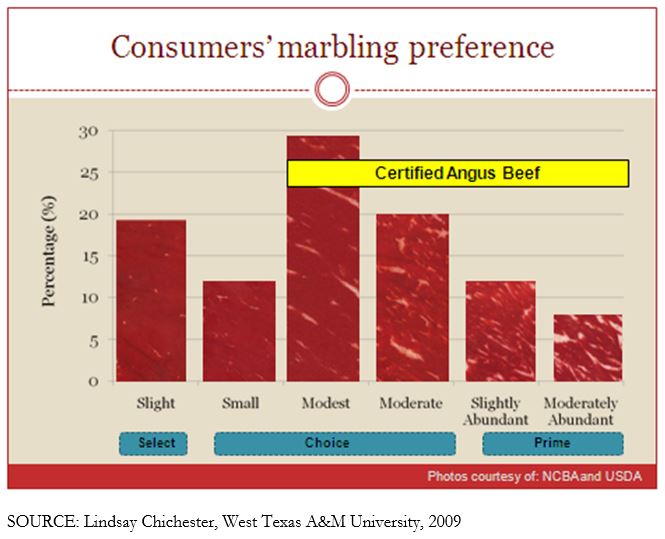
Consumers want high-quality, branded beef
University survey reveals perceptions of meat and entire industry
by Miranda Reiman
Beef reigns supreme in consumers’ protein choices, according to research released earlier this year from West Texas A&M University. Nearly half of consumers surveyed put beef as their No. 1 protein choice, and 97% indicated they ate beef between one and 12 times each week.
The study, “Consumers’ perceptions and preferences of meat and the meat industry,” was the result of doctoral research conducted by Lindsay Chichester, Canyon, Texas. She looked at the whole range of popular opinion on meat.
“We were trying to gauge consumer preferences, what their concerns were, and what they’re not concerned with,” Chichester says. “I think as an industry that’s where we need to go – our consumers are obviously the ones who support us and keep us in business.”
Digging into details, 65% of consumers preferred some type of branded beef. Among them, the largest breakout group, 28%, preferred their steaks branded as Angus beef. Chichester’s academic advisor, animal scientist Ty Lawrence, says that proves the power of marketing. “A lot of that is obviously going to tie back to the recognition of a brand like Certified Angus Beef,” he says.
The term “Angus” outweighed any other branding term, including Prime, tender, organic and grass-fed in consumers’ perception, but branding with words is not enough. Consumers are looking for quality behind those terms, Lawrence points out.
“The data also indicated customers say they want a higher quality cut of meat,” Lawrence says. When asked to visually identify the desirable amount of marbling in a steak, 49% selected Modest or Moderate marbling – the same level required for Certified Angus Beef ® (CAB®) brand acceptance.

“CAB’s marbling criteria overall was the largest sector of what consumers indicated they wanted – average Choice or better,” Chichester says. Another 20% of the population indicated a desire for Slightly Abundant or Moderately Abundant marbling, fitting into the Prime and CAB Prime category.
These results outline a clear challenge to cattle producers, Lawrence says. “Twenty percent preferred Prime-level marbling, while the beef population is at 2.5% Prime, maybe 3% on a good day. So we’re 17% short of the Prime population our consumers say they want.” With nearly 70% of the population indicating they preferred upper Choice or higher, he says, “It’s phenomenal what consumers say they would prefer in comparison to what we actually have to offer them.”
Most consumers, 83%, make those purchases at a supermarket, where competition rules the meat case. They are most concerned with price, color of the meat, the amount of edible product and marbling. “So we’re still looking at price, color, yield and quality,” Lawrence says. “The customers want their best combination of quality and cutability at a price they deem reasonable – and that’s different for everybody.”
Results did indicate 56% of consumers were willing to pay a premium for all-natural products like CAB brand Natural. However, it also indicated consumers were unsure of the true meaning behind a “natural” label, Chichester pointed out. “Producers should know they have a market for natural products,” she says. But it comes with a need for producers to better define and educate consumers about what those labels mean, Lawrence says.
The survey also pointed out a need to correct misperceptions. One-third of consumers thought eating meat from animals treated with antibiotics would make them “resistant to antibiotics.” Another 57% said they were concerned that animal mistreatment is widespread in the industry.
“We have some education to do,” Lawrence says. “And we have a long way to go in showing our consumer base that animal husbandry is alive and well in production.”
